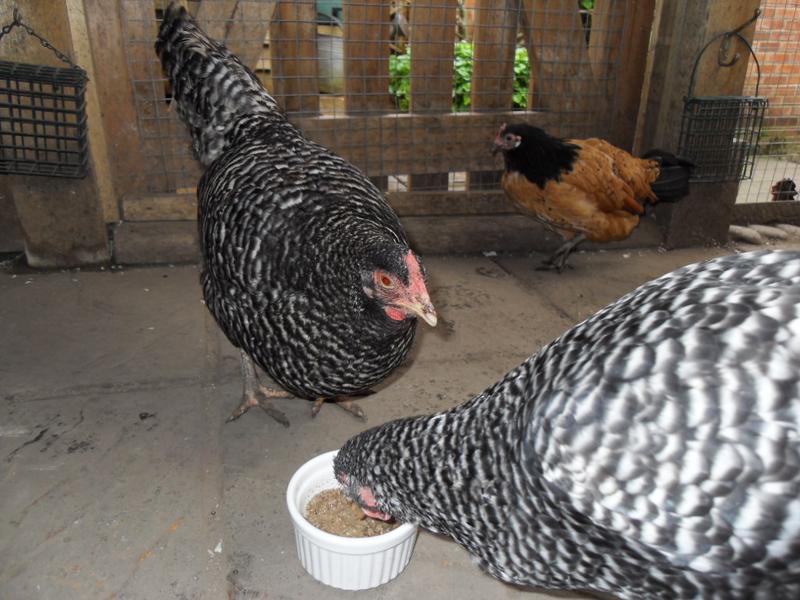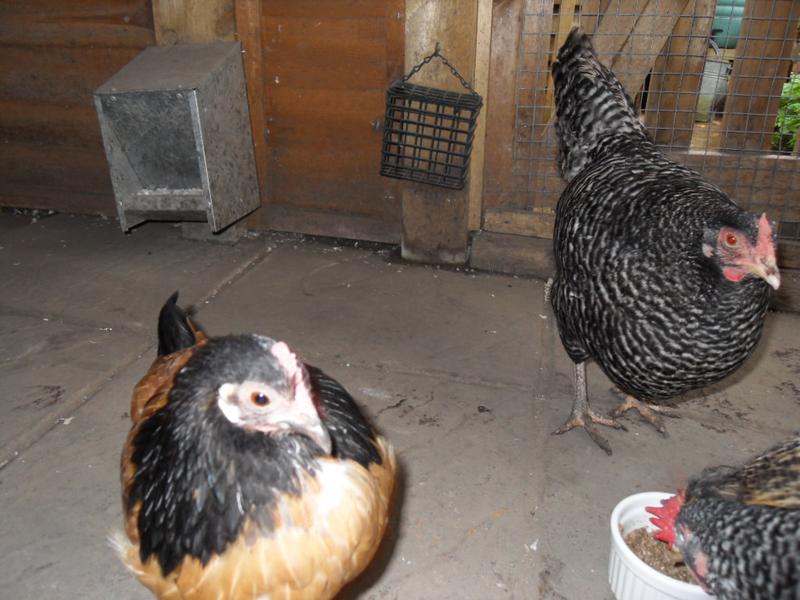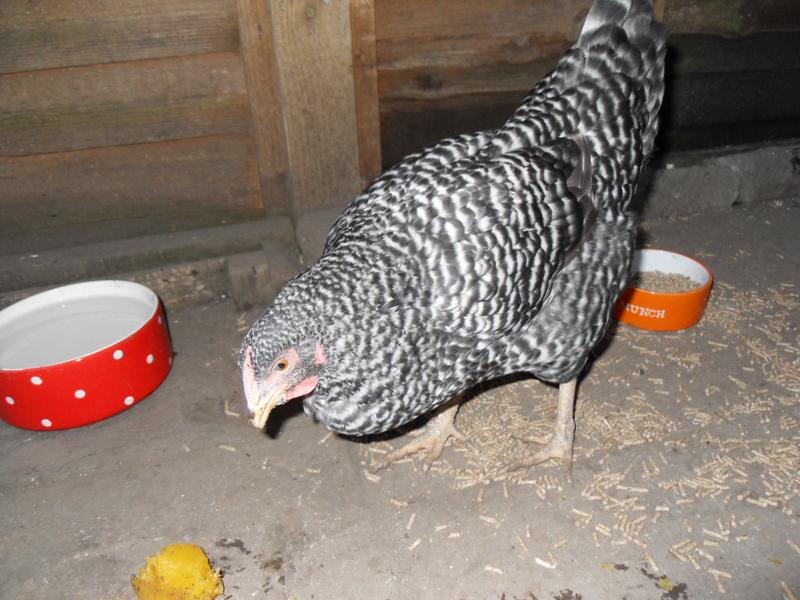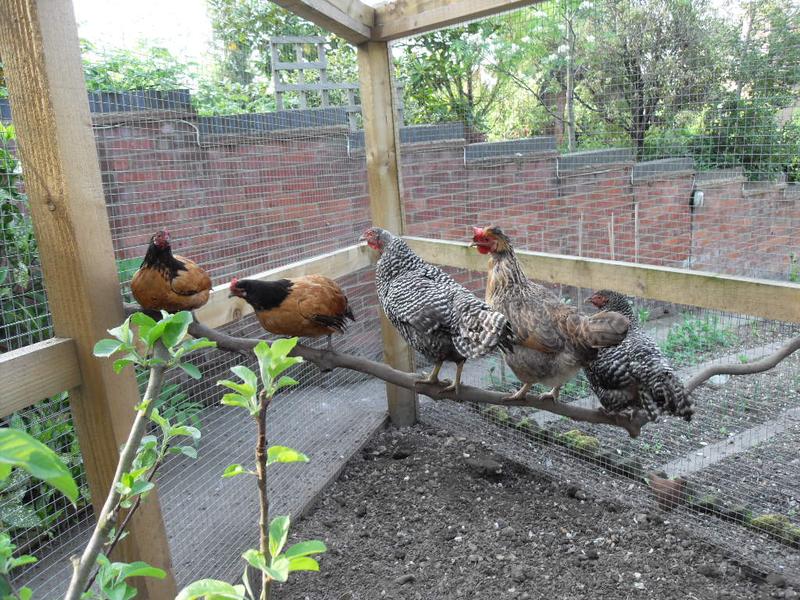Pepper and Dotty are dominiques which are a rare pure breed with rose combs. They are one of the oldest American breeds and very cold hardy due their comb which is not prone to frostbite and their thick layer of downy under feathers.
When we first collected them Pepper was two months old and Dotty was one month old and not fully feathered. I wondered if we would be able to tell them apart when they were fully grown. I needn’t have worried as they look very different and have quite different combs and faces.
There was only one place I could find breeding them in England and that was a farm in Dorset which is a one and half hour drive from us. The breeder had two breeding pairs of dominiques and I have often speculated that Pepper and Dotty may have come from the two different sets of parents.
The rose comb is a ridged comb ending in a backward facing spike. Pepper’s comb is quite ridged and her spike goes to quite a point. Dotty’s comb is much flatter and less pointed and I often think it looks as if it’s made of plastic. Dotty’s lobes are also bigger than Pepper’s. I think Pepper has a prettier face and comb but Dotty has a very sweet nature.
Having been together since they were so young, these two have a real bond with each other. Pepper is top hen and Dotty is second in command. I sometimes wonder if this is what gives her such a sweet nature. She enjoys the prestigious position that comes from being so close to Pepper but doesn’t need to peck at the others to maintain her place in the pecking order. Dotty basks in Pepper’s top position and gets on with enjoying her own position without any hassle. Dotty doesn’t bother the other girls and they don’t bother her. Pepper keeps the other girls in their place with a swift peck when needed, to remind them she is top hen, but she has never ever pecked Dotty nor has Dotty ever pecked her.
Bluebell is a chalk hill blue and is a hybrid. Bluebell has quite a large floppy comb and large lobes.
Bluebell was firmly bottom hen before we added the bantys to our flock in May. She has since then bullied them to let them know that they are below her and that she doesn’t intend to be bottom hen any longer.
The bantys are pure breeds and are vorwerks. They have a single comb and we got them at about six months old. I had much more difficulty telling these girls apart until I got to know them. Amber is the smallest of the two but also the feisty one and Honey is firmly in the position of bottom hen.
Like Dotty I often think Honey has an easier life because she accepts her place at the bottom and therefore doesn’t bother the other girls and Bluebell doesn’t bother her as much as Amber. Because of this Amber has a little bit missing from her comb where it was pecked during the integration period.
It’s difficult to see as these girls and their combs are so small but the top part of her comb has a little bit missing.
Honey’s comb has more of a point to the end.
Amber also shows Honey from time to time that she is above Honey in the pecking order. When we first got them and they were in the separated part of the run, while going through the integration period, they would run at each other. They would chest butt and fly at each other and it soon became obvious that Amber was top out of the two of them. If there were treats Amber would peck Honey away from them. They soon settled their order and are always together.
Recently though when I was cleaning the run I heard a commotion and was really surprised to see Amber and Honey having a real go at each other. They were flying at each other and feathers were drifting from them. Amber was the instigator because I separated them with my hand but Amber would chase Honey behind the bush. I had no idea what had started this and soon they resumed being together as normal. I can only assume that Amber was making her higher position known to Honey and yet Honey seems happy to be bottom girl and never contests her position.
I have never seen the big girls do this other than the baby chest bumping during their early days. It seems that although Amber is the smallest she is not going to let that stop her from avoiding the bottom position. I find the pecking order quite fascinating.










 Click here to see the history of my flock.
Click here to see the history of my flock.